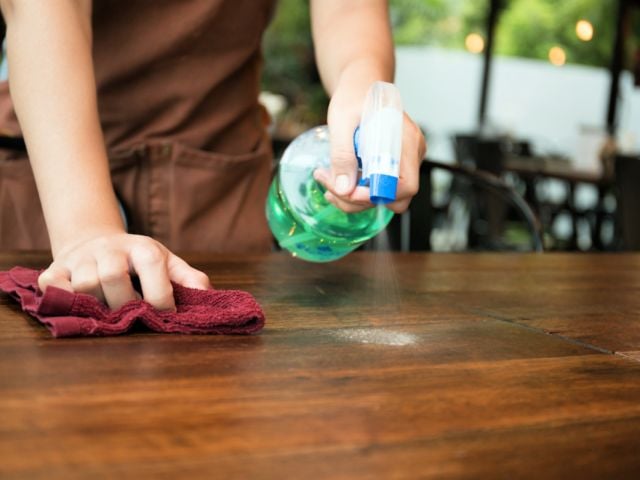Last summer I slept in New York City. To anyone familiar with sleeping in New York City (not me), bedbugs is just part of the deal. When my cousin, in whose groovy, old loft I was crashing, suggested I remove my clothes in the bathtub upon returning home and wash them immediately, this unindoctrinated Oregonian was shocked. While I'd grown up with the expression, "Sleep tight, don't let the bed bugs bite," I'd never stopped and really given it any thought. Because (fortunately), I never had to.
Second National Bed Bug Summit! But now that bedbugs were found in Oregon, in a state park cabin that I've visited many times, I'm paying a bit more attention. And I'm clearly not alone. This week the U.S. federal government is convening the 2nd National Bed Bug Summit in Washington DC. The event's stated goal is to: "The goal for this summit is to review the current bed bug problem and identify and prioritize further actions to address the problem." if you're way into this kind of thing, join the webinar on February 1 & 2.
Handling Bed Bugs at Home While it's heartening that the good folks in DC are putting their heads together on this, it really boils down to this: if I don't want them, I need to understand two key things: how to not get them, and how to get rid of them if I do get them - the non-toxic way.
Prevention: How to not get bed bugs in the first place This, of course, is the best approach. We like these preventive measures that the EPA recommends to keep bed bugs at bay:
- Look. Check secondhand furniture, beds, and couches for any signs of bed bug infestation, as described above before bringing them home.
- Cover. Use a protective cover that encases mattresses and box springs which eliminates many hiding spots. The light color of the encasement makes bed bugs easier to see. Be sure to purchase a high quality encasement that will resist tearing and check the encasements regularly for holes.
- Reduce clutter in your home to reduce hiding places for bed bugs.
- Take care when traveling. In hotel rooms, use luggage racks to hold your luggage when packing or unpacking rather than setting your luggage on the bed or floor. Check the mattress and headboard before sleeping. Upon returning home, unpack directly into a washing machine and inspect your luggage carefully.
Getting Rid of Bed Bugs: Go Non-Toxic First Once you've identified an infestation (here's how to be sure), don't immediately reach for the spray can, because you might not need it. The EPA suggests you do these non-chemical treatments - first:
- Clean. Wash and dry bedding and clothing at high temperatures to kill bed bugs.
- Heat infested articles and/or areas through to at least 113 ºF (45 ºC) for 1 hour. The higher the temperature, the shorter the time needed to kill bed bugs at all life stages.
- Cool. Cold treatments (below 0 ºF (-19 ºC) for at least 4 days) can eliminate some infestations. Again, the cooler the temperature, the less time needed to kill bed bugs.
- Cover. Use mattress, box spring, and pillow encasements to trap bed bugs and help detect infestations.
If these non-toxic tactics don't solve the problem, there are over 300 pesticide-based products approved for use by the EPA to kill bed bugs (here's an online search tool). The EPA offers these important safety warnings before using a pesticide in your house - they are, after all, pesticides:
- Indoor products only. Never use a pesticide indoors that is intended for outdoor use. It is very dangerous and won't solve your bed bug problem.
- Choose carefully. Using the wrong pesticide or using it incorrectly to treat for bed bugs can make you sick, may not solve the problem, and could even make it worse by causing the bed bugs to hide where the pesticide won't reach them.
- Bed bug products only. Check if the product is effective against bedbugs -- if a pest isn't listed on the product label, the pesticide has not been tested on that pest and it may not be effective. Don't use a product or allow a pest control operator to treat your home unless bed bugs are named on the product label.
- Read and follow that label. Before using any pesticide product, READ THE LABEL FIRST, then follow the directions for use.
- Go EPA approved. Keep in mind that any pesticide product without an EPA registration number has not been reviewed by EPA, so we haven't determined how well the product works.
Hiring a reputable pest management professional is a smart option if you don't know hot to properly and safely eradicate bed bugs with these products.
EPA's Top 10 Bed Bug Tips These are good, comprehensive tips. Read them NOW, before you get bed bugs, so you're prepared and don't panic. Share them with friends and family, because these days it seems bed bugs are back and just about everywhere. Plus, what if you - or you children - sleep at their house?



